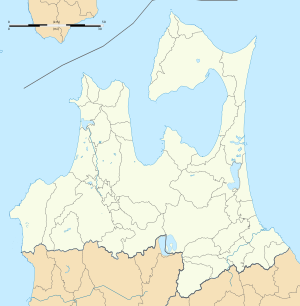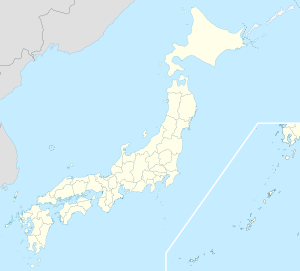Lake Ogawara
| Lake Ogawara | |
|---|---|

|
|
| Location | Aomori Prefecture |
| Coordinates | 40°47′00″N 141°19′00″E / 40.78333°N 141.31667°E |
| Type | dimictic lake |
| Primary outflows | Pacific Ocean |
| Basin countries | Japan |
| Surface area | 63.2 km2 (24.4 sq mi) |
| Average depth | 11 m (36 ft) |
| Max. depth | 25 m (82 ft) |
| Water volume | 0.714 km3 (579,000 acre·ft) |
| Residence time | 0.8 years |
| Shore length1 | 67.4 km (41.9 mi) |
| Surface elevation | 0 m (0 ft) |
| Frozen | December to March |
| 1 Shore length is not a well-defined measure. | |
Lake Ogawara (小川原湖 Ogawarako?) is Japan's eleventh largest lake (by area) and the largest in Aomori Prefecture. It spans the boundaries of the city of Misawa and the town of Tōhoku and the village of Rokkasho in Kamikita District.
The lake has an area of 63.2 km² and holds 0.714 km³ of water. Its circumference is 67.4 kilometers. At its deepest point, the water is 25 meters deep, with an average depth of 11 meters. The surface is at sea level. The lake is shallow (under 2 meters) from the shoreline to a distance of approximately 200 meters, whereupon the depth drops off precipitously. The edge of Lake Ogawara is very near the coast of the Pacific Ocean, and the sand bar guarding its mouth has been breached numerous times by storms or typhoons, thus accounting for the brackish water of the lake. There are four inflowing rivers, all coming from Hakkoda Mountain Range. The only outflow is the Takase River, which drains the lake to the Pacific Ocean.
Lake Ogawara was originally a marine bay, which became a lake approximately 3,000 years ago by the formation of a sand bar at its mouth. The shoreline around Lake Ogawara has been settled since prehistoric times, and numerous Jomon period remains and shell middens have been discovered.
The lake was used by the Imperial Japanese Navy Air Service units at Misawa Airfield to practice for the attack on Pearl Harbor during World War II for its similarity in depth to Pearl Harbor in Hawaii.
...
Wikipedia


